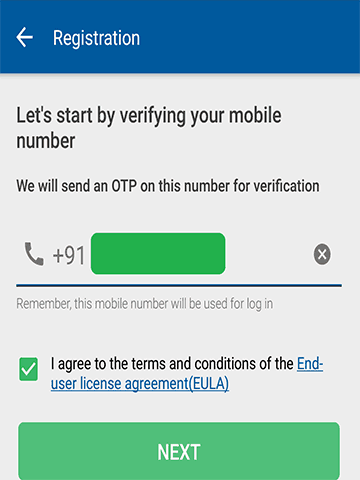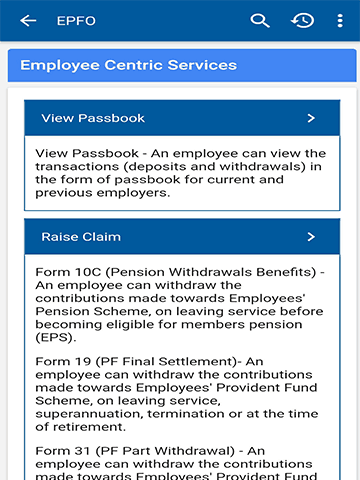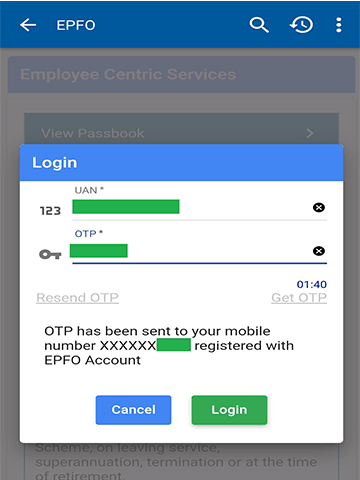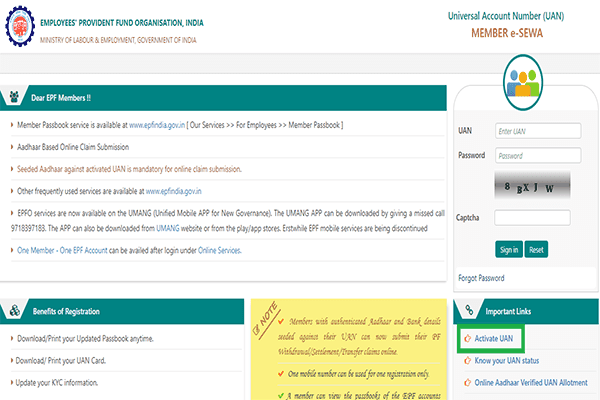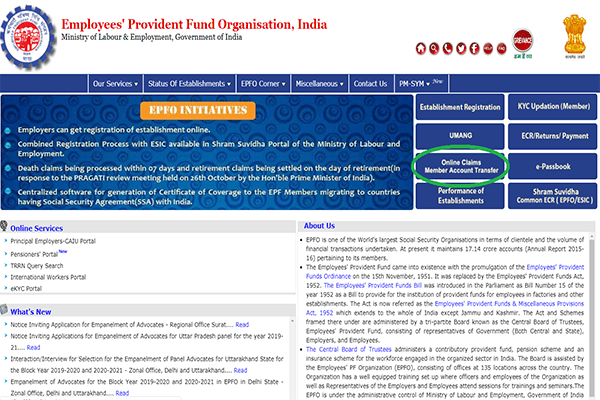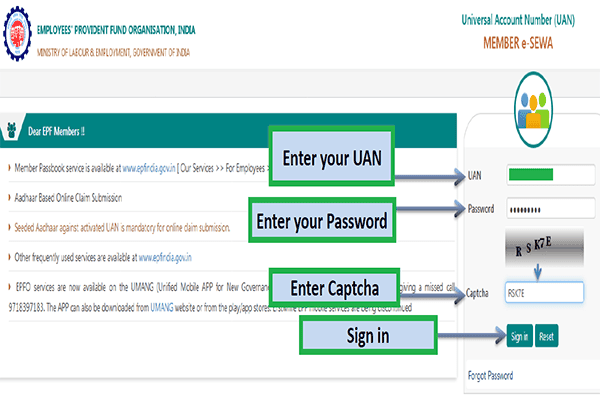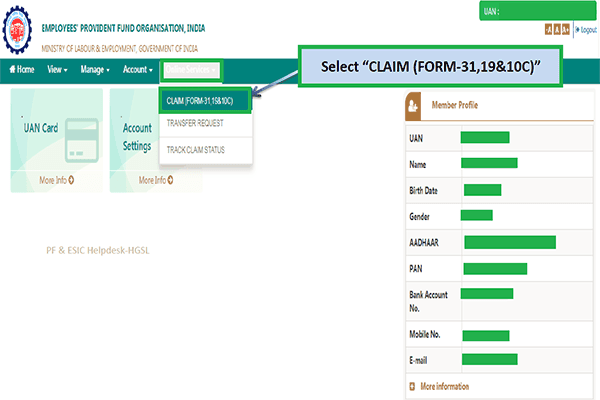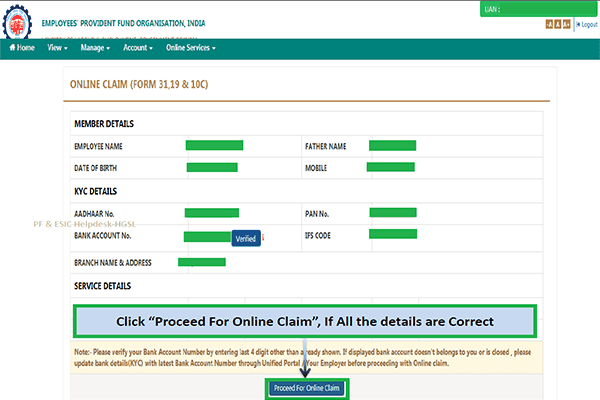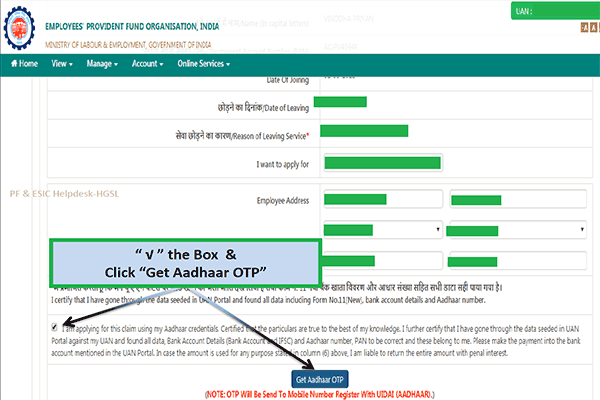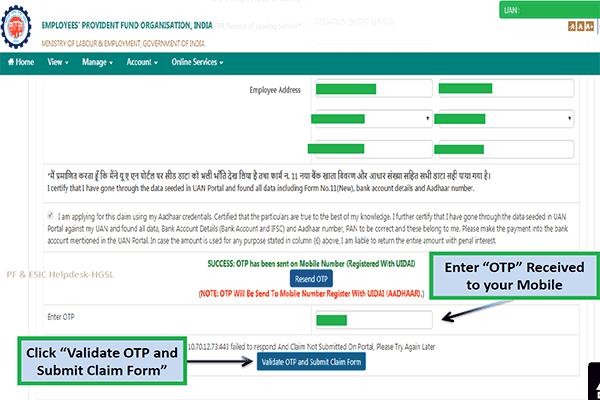Employees Provident Fund (EPF) also known as Provident Fund (PF) is a post-retirement financial lifeline for most Indians.
EPF or PF is a corpus fund that gradually builds up over years of active service.
You contribute part of your basic salary- about 12 per cent every month while the employer chips in an equal amount. The government pays an attractive interest.
While it is inadvisable to withdraw part or entire PF amount before retirement, we do encounter certain circumstances that force us to dig into this corpus fund.
In 2018, the Indian government enacted newer laws for withdrawing money from EPF accounts. Here, we look at these laws and how to withdraw money from PF in 2019.
Reasons to Withdraw PF
In October 2018, the Indian government made several amendments to the Employees Provident Fund (EPF) scheme. Now, you can withdraw PF for various reasons, provided you meet the set criteria.
If you wish to withdraw PF for any of these reasons, here are simple steps to follow.
How to Withdraw PF
Before you consider withdrawing PF, find how much money you actually require. Because PF is an excellent source of money that secures your old age. Withdrawing PF means throwing away such wonderful security. But if you are desperate for cash, here are steps to follow.
1. Get Documents Ready
Withdrawing PF online or physically involves submitting the necessary proof to the Employees Provident Fund Organization. Here are some documents you will need.
- Aadhar Card
- Permanent Account Number (PAN)
- Universal Account Number (UAN) issued by EPFO
If you do not have Aadhar card or UAN, you can still withdraw PF in the methods I will describe later in this article.
2. Check PF Balance
Obviously, you need to check PF balance before withdrawing. There are simple ways to check PF balance.
- Through UMANG app (EPF passbook)
- On EPFO website (EPF passbook)
- From nearest EPFO office
- By SMS
Read our excellent guide on how to check PF balance and know how much money you can withdraw.
Once you know the balance, and the amount you want to take from EPF account there are several excellent ways to withdraw EPF balance.
3. File PF Claim
You have to file a claim for PF withdrawal. This depends upon the type of documents you possess. There are four distinct ways of PF withdrawal.They are discussed as follows
How to Withdraw PF online
There are two distinct ways to withdraw PF online. Both are fairly simple provided you have the necessary documents ready.
1. UMANG App
The simplest way to withdraw PF online is from your smartphone.
- Download and install the UMANG app. UMANG stands for Unified Mobile Application for New-age Governance.
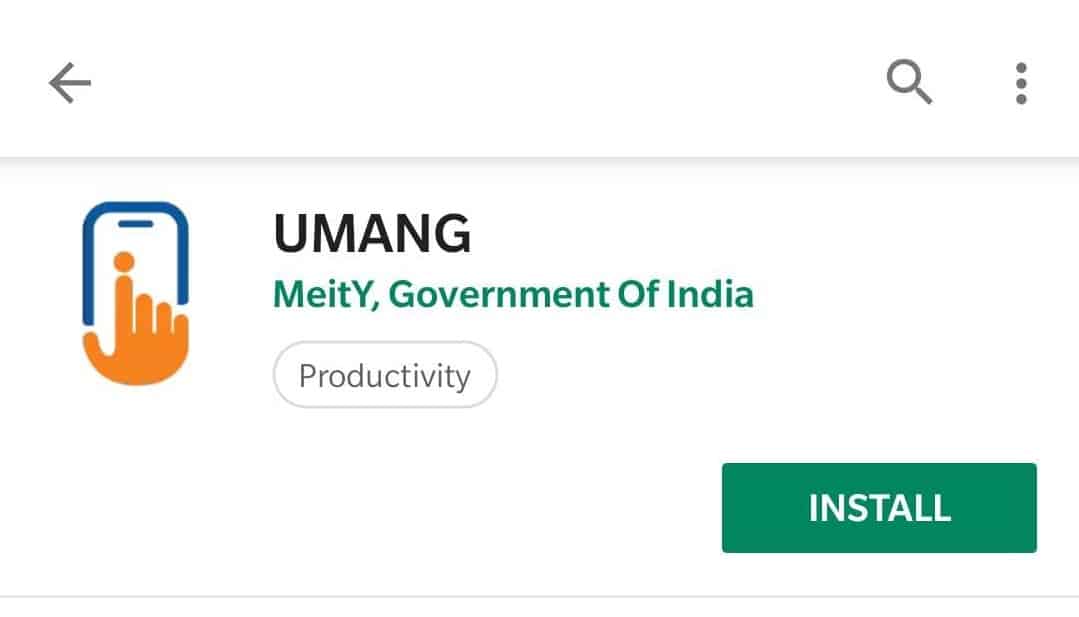
- Upon downloading UMANG, complete the necessary registration procedures. This is very simple and involves getting a One Time Password (OTP) to verify your mobile number.
- Once your UMANG app is registered, go to the menu that indicates various services. Here you will find the EPFO logo.
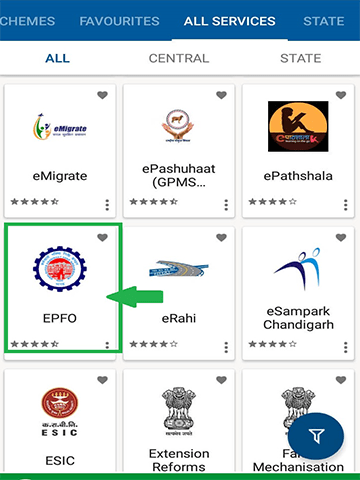
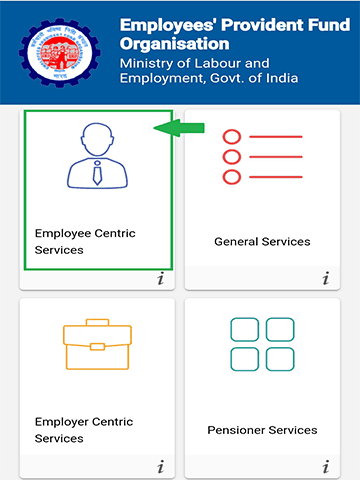
- Click on the EPFO logo. The app will now display various services.
- Select ‘Employee Centric Services’ on the app.
- Now the app will display various services, including part withdrawal of PF account and a full withdrawal.
- Select the service you need.
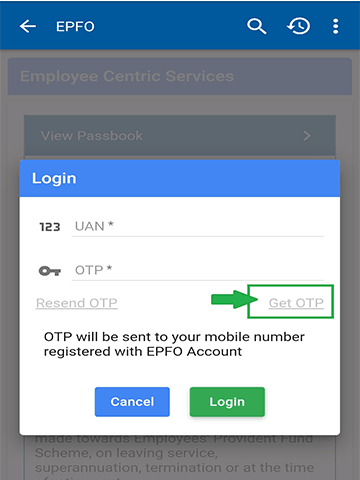
- Here you have to provide Universal Account Number (UAN) and other details to verify your identity.
- Upon verification, you will get an OTP.
- Fill in the necessary details and click the OK key to withdraw.
- An SMS message will alert you that a withdrawal request has been received by EPFO.
You can check the status of your claim after a few days. This is because your request will be sent to the EPFO office which holds your account for further processing.
2. Online at EPFO website
You can also file a PF withdrawal claim online, through EPFO website.
- To do so, you have to first register as a user, using your UAN and other personal details.
- Once your registration is successful, go to Online Claims/ Member Account Transfer link.
- Here, you have to log in with the UAN number and your chosen password.
- Now click on the claim link.
- Fill in the relevant details.
- Confirm your transaction with the OTP that will arrive on your registered mobile number.
Again, claim status will appear only after a week or so.
Important Information to Withdraw PF
- UAN number is most important for transactions through UMANG and EPFO website.
- To receive the OTP, your mobile number should be the same as registered with EPFO.
- If you do not have the UAN, contact the nearest EPFO office with your PAN card and other identity documents.
- You will also have to visit the nearest EPFO office to update your mobile number by providing the necessary proof of identity.
How to Withdraw Provident Fund Offline
There are two procedures to withdraw PF.
a) With Aadhar Card: This is the fastest and involves few hassles
b) Without Aadhar Card: Can prove very laborious and tiring.
First, let us look at how you can withdraw PF using Aadhar Card
a) PF Withdrawal with Aadhar Card
Complete the Composite Claim Form- Aadhar and submit to your nearest EPFO office. Since this withdrawal of PF is Aadhar based, you do not require an endorsement from the previous employer. This system is particularly useful in case you have bad relations with the past employer or their authorized signatories for the Provident Fund. It does away with the need to beg your previous employer for signatures and stamps to withdraw PF.
To use this facility, you have to ensure your PF account is linked to Aadhar. Secondly, it is also necessary to have the Universal Account Number(UAN) while filing the claim. You can find your UAN number and bank details where the PF account is held using your Aadhar card. Simply look up on the EPFO portal for these details.
Generally, employers will have taken your Aadhar details through Form-11, while opening the account. If not, the process can prove a hassle. You will need to get the UAN from the nearest EPFO office and get this number activated. However, such cases where a UAN is not issued or activated are fairly low.
b) PF Withdrawal without Aadhar card
If you do not hold an Aadhar card, the process can be fairly complex. In such cases, you need to provide your Permanent Account Number(PAN) provided by the Income Tax Department as well as the account number of the EPF account.
Both these details are to be mentioned in the Composite Claims Form (Non-Aadhar) available from EPFO offices.
Both Aadhar and Non-Aadhar based withdrawal of Provident Fund has to be supported by additional forms.
Terms and Conditions (Aadhar and Non-Aadhar based EPF)
There are four terms and conditions if you want to withdraw PF using Aadhar card or without it. You need to conform to either of these.
- Withdrawing your PF contribution plus those made by employer and government under Employee Pension Scheme (EPS) if you have less than 10 years of service.
- If you have more than 10 years of service and want to withdraw all money in Provident Fund.
- Withdrawal of PF balance and part of your pension under EPS. This is permitted only after completing 10 years of service and between 50 to 58 years of age.
- Withdrawal of both PF balance and full pension amount under EPS. This facility is permitted only if you are above 58 years old or more and have retired.
Additional Forms to Withdraw PF
The process is similar for Aadhar and Non-Aadhar based PF subscribers.
For those below 58 years of age, it is possible to continue with PF by availing the Scheme Certificate by submitting the completed Form 10-C at the EPFO office. Use this facility if you plan to work again and will be entitled to PF from the new employer.
If you are between 50 and 58 years old, it is possible to opt for a reduced pension when you withdraw PF. This can be done by submitting the completed Form 10-D along with the Composite Claim Form.
Citizens over 58 years of age can withdraw the full Provident Fund and EPS amount by submitting Form 10-D along with the Composite Claim Form.
Next Steps to Withdraw PF
Once you have submitted the Composite Claims Form and other forms, the process to withdraw PF takes anything from one week to a month depending upon where you stay.
In some cases, PF withdrawals are faster if the money is to be received in an India Post savings bank account. However, this is not a rule.
The best way to withdraw your PF is by continuing the account number for use in future. This ensures you have a longer track record of paying Provident Fund contributions. This comes handy while paying Income Tax.
How to Withdraw PF and EPS
This is a bit confusing so let me explain. PF is also called EPF. However, the term EPS is used to describe an Employee’s Pension Scheme. This fund is also sponsored by EPFO.
Millions of Indians are blissfully unaware they have a pension account too with EPFO. You may have opted for EPS but forgotten about it.
If you have opted for EPS, part of contributions from your PF goes into the pension scheme. This means you will get a fixed pension throughout life. The pension continues after the death of the PF and EPS member. Upon death, EPS benefits are paid to spouse or nominees that you have selected.
You can withdraw the entire EPS amount too, provided you fulfil all conditions set by EPFO.
Remember: EPS is totally different from the pension you get from the Pension Fund Regulatory and Development Authority of India (PFRDA).
Hence, never confuse between the National Pension Scheme (NPS) system operated by PFRDA and EPS sponsored by EPFO.
Jeevan Pramaan Patra/ Life Certificate
If you are withdrawing EPS or want to get a pension from your PF contributions, EPFO might ask you for something called Jeevan Pramaan Patra or Life Certificate. This certificate can be created on UMANG or online.
However, I recommend you keep a Jeevan Praman certificate ready. You can get one from the comfort of your home using a computer or UMANG app on your smartphone.
Rules for PF Withdrawals
Before you proceed to withdraw PF money, note these important rules and regulations.
Withdrawals Not Permitted
- You cannot withdraw PF unless you are 58 years (or have completed 57 years of age) and have retired.
- Provident Fund cannot be withdrawn if you have to continue working past 58 years of age.
- Withdrawals are also not possible if you seek an extension of service beyond 60 years age.
- It is also not possible to withdraw PF if you have continuous service and contribution for 10 years with the same employer unless permitted under specific clauses of EPFO, as mentioned in exceptions.
Permitted Withdrawals
- If you are below 58 years (or completed 57 years of age) and have lost employment for any reason. However, in such cases, it is necessary to prove that you remain unemployed after 60 days since leaving duties.
- In cases where you have left the job by resignation or termination and do not wish to continue the Provident Fund scheme of the former employer.
- Cases of emergency where you have no options other than to withdraw PF.
- Upon retirement at the age of 58 years and above.
Exceptions
According to a decision at the 22nd Central Board of Trustees meeting of EPFO held June 2018 employees that resign from their service can now withdraw 75 per cent of their total Provident Fund money after 30 from the date of stopping work. This relaxation is offered to PF subscribers to meet monthly financial needs.
This can be done even if you have not completed 10 years of continuous service with an employer who also contributes to your Provident Fund.
To avail this relaxation, you may have to provide adequate and acceptable proof of unemployment. You also need to show there are no alternative sources of income to support family and self.
Providing false information to withdraw PF is considered fraud and punishable under various sections of the Indian Penal Code.
In Conclusion
If you view the broader picture, it is not advisable to withdraw PF unless you have pressing and genuine need for the money. Instead, allow the money and EPF to mature. These will ensure you are financially secure after retirement.
Keeping money in a PF account earns good interest. It more than doubles since your employer also makes a contribution to the fund. Should you need to withdraw PF, follow these simple steps.







